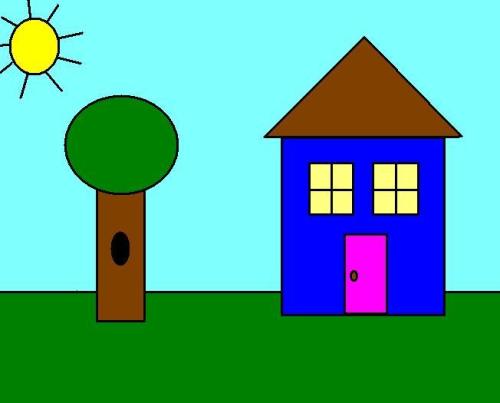The Art of Geometry

I’ve never been a whiz at math. I take after my father, who once said, “There are three kinds of people in the world: those who can count, and those who can’t.” In my family, my mother kept the checkbook. In junior high and high school, I was fortunate enough to have math teachers who, through patience and compassion, managed to teach me enough of the basics to get by. In college, I took geology to avoid freshman algebra. I know more about rocks than numbers, which isn’t much.
So it was a surprise to me in high school that I discovered a love for geometry. I might be a semi-klutz at equations, but I was good with shapes. My teacher wasn’t surprised; geometry isn’t really math, she said, it’s logic. It’s the way things fit together, the beauty of lines and angles in time and space. Sure, there are numbers involved, but they are numbers you can see and feel, that you can push and pull and twist into fascinating objects. The limits of geometry are imagination.
When I began to think about how I do this storytelling thing I do, it occurred to me that part of it is geometry. A story has lines and angles and shapes that exist in time and space – geometry as architecture.
I start with a central character I believe in, and that’s the foundation. I surround that person with other characters, some of which are actually places (a town, for instance, can be a character in my story). I put the people in a particular time and place, give them a dilemma, and turn them loose to bump up against each other and make sparks. Things begin to happen, to move in directions. I’m building a house, with walls and doors and windows, floors and roofs, furniture and interior design, clothes in the closet and toys on the floor, all of the things that make the house a home where people live.
I don’t know how the whole thing will look when I start, or really even while I’m building. I know a few things that might serve as signposts when I’ve reached a certain point. But I have to be open to possibility and serendipity. When I finish, there it is: a geometric shape, something like no other, fashioned out of my over-active imagination. Each reader, looking at my geometry from a special and unique angle, will see something a little different. Hopefully, all will see something artful – a memorable thing or two, and the geometry that helps it hang together.
Robert Inman’s novels are available on on Amazon Kindle, Barnes & Noble Nook, and Kobo.